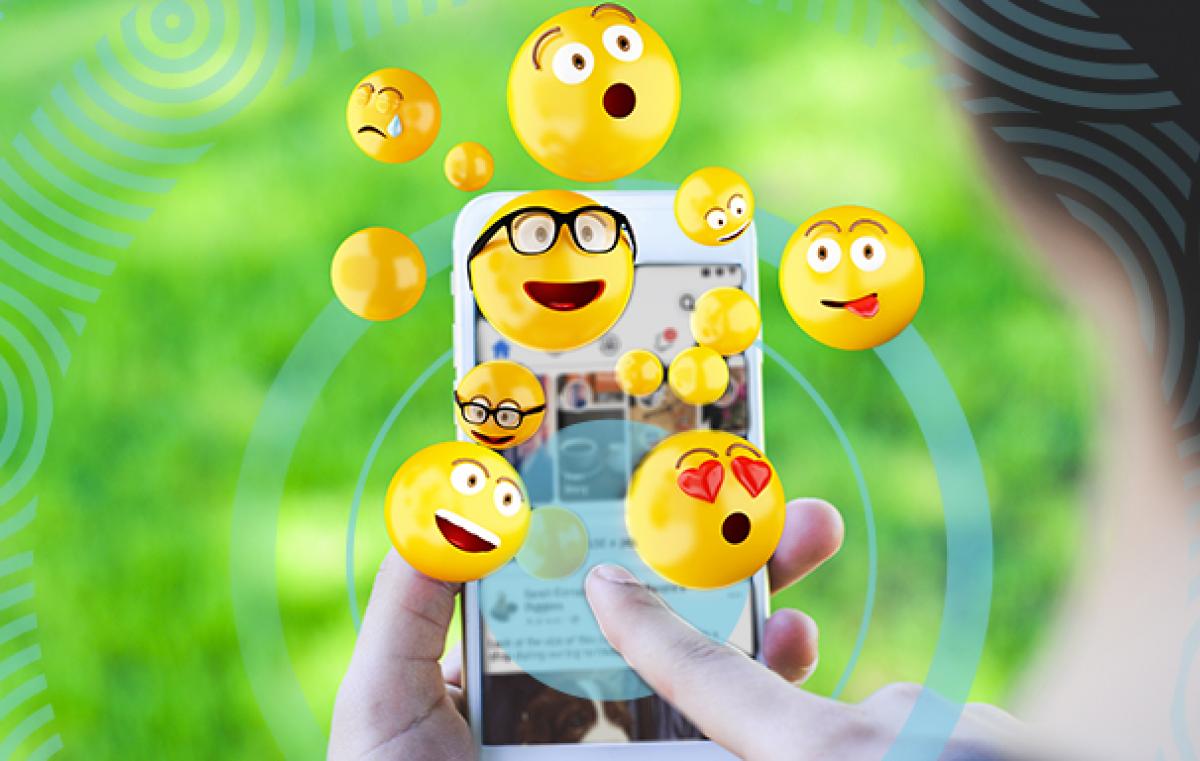World Emoji Day
To mark World Emoji Day, Prof. Chaim Noy, of the School of Communication at Bar-Ilan University, takes a closer look at some of the most popular smiley faces, love symbols and images appearing these days on our digital screen

To mark World Emoji Day, which is celebrated annually on July 17, Prof. Chaim Noy of the School of Communication at Bar-Ilan University takes a closer look at the most popular icons of modern times.
The emoji burst into our lives less than twenty years ago, and today, it's hard to picture digital communication without the array of tiny, colorful, and (for the most part) amusing icons. There are close to 3,000 of these emoticons, and the most common one is “Face with Tears of Joy.” In fact, in 2015, this laughing-face emoji was named “word of the year” by Oxford English Dictionary, and according to the site, emojitracker.com, since 2012, it has been used about 2.5 billion times! Other familiar and popular faces are smileys with a droplet of sweat and emoji kissing or with heart-shaped eyes, and of course, there are hearts in a spectrum of colors and flowers galore.
Why are emoji so prevalent? The answer is simple – they fill a basic and vital function in interpersonal human communication. While often underrated and not taken seriously in terms of research, today, there is greater understanding of their importance and the meanings they express. Indeed, six years ago, the media was in a tizzy about the shade of emoji faces, and since then one can select the relevant skin tone (dark or light).
Emoji are a useful nonverbal communication language. They can easily convey emotion without using words, and can even foster communication with people from different cultures who do not speak our language (although studies also show significant intercultural differences in communication with emoji).
In courses at the BIU School of Communication, we examine how emoji often appear alongside text, rather than alone as independent visual language. This is an additional explanation as to why emoji are so popular. These images are often used to compensate for the absence of nonverbal signals, such as changes in the intonation of speech, facial expressions, body language, etc., which have always accompanied verbal communication between people.
Thus, emoji are used to clarify and to pinpoint the meaning of spoken words. Indeed, when we use mediated communication (as opposed to face-to-face interaction), we are left only with words, and the emoji are necessary in clarifying their true intent. For example, in a recent class, a student brought a WhatsApp text with an emoji that was sent to a couple. "What a respectful relationship you have (laughing crying emoji)”. Judging by the text alone, it would seem that the student was praising the couple. But in fact, her tone is cynical, and her words are actually a critique of their marital bond. Thus, emoji are used to strengthen or soften the text, to embellish it, and sometimes to even completely reverse its meaning.
The third and last explanation for the popularity of emoji communication relates to the fact that since the earliest cave paintings in Europe (40,000 years ago), human communication has included a prominent iconic visual component – signs that visually resemble what they signify. From this point of view, researchers point to the return of the iconic dimension to human communication, and the high frequency of using emoji is not a novelty but a media correction!
In conclusion, more than emoji attest to human preference for visual or verbal communication, they underscore the fact that communication is complex and multi-dimensional (multimodal), and at its best, incorporates visuals and words. In the future it will be interesting to track the growing use of emoji, which is already evident: the rapid debut of large and prominent stickers, which can’t be integrated into the text; Bitmoji - emoji that users themselves produce (based on an image); Animogie – animated emoji; and commercial emoji – used to advertise companies, and which attest to the legalization and commercialization of the emoji.
Prof. Noy teaches courses on emoji in daily digital media, and serves as the Chairman of the Israel Communication Association.
For more on BIU's School of Communication.